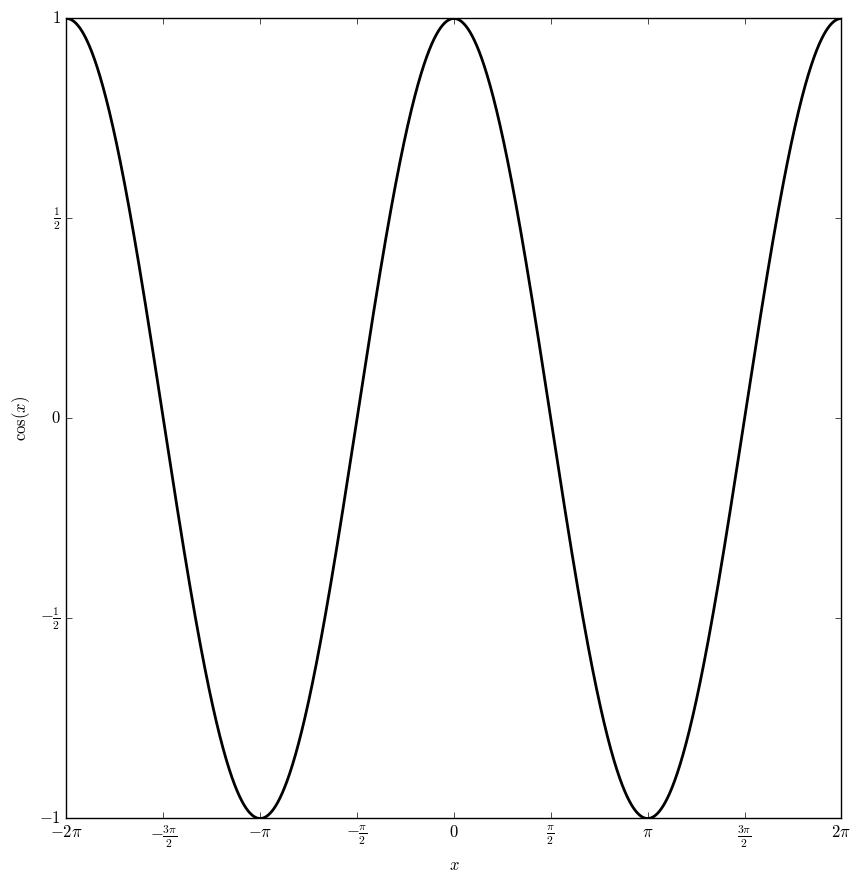Difference between revisions of "Cosine"
From specialfunctionswiki
| Line 23: | Line 23: | ||
[[Relationship between sech, inverse Gudermannian, and cos]]<br /> | [[Relationship between sech, inverse Gudermannian, and cos]]<br /> | ||
[[2cos(mt)cos(nt)=cos((m+n)t)+cos((m-n)t)]]<br /> | [[2cos(mt)cos(nt)=cos((m+n)t)+cos((m-n)t)]]<br /> | ||
| + | [[Orthogonality relation for cosine on (0,pi)]]<br /> | ||
=See Also= | =See Also= | ||
Latest revision as of 22:09, 19 December 2017
The cosine function, $\cos \colon \mathbb{C} \rightarrow \mathbb{C}$ is defined by the formula $$\cos(z)=\dfrac{e^{iz}+e^{-iz}}{2},$$ where $e^z$ is the exponential function.
Domain coloring of $\cos$.
Properties
Derivative of cosine
Taylor series of cosine
Weierstrass factorization of cosine
Beta in terms of sine and cosine
Relationship between cosine and hypergeometric 0F1
Relationship between spherical Bessel y and cosine
Relationship between cosh and cos
Relationship between cos and cosh
Relationship between cosine, Gudermannian, and sech
Relationship between sech, inverse Gudermannian, and cos
2cos(mt)cos(nt)=cos((m+n)t)+cos((m-n)t)
Orthogonality relation for cosine on (0,pi)
See Also
References
- 1964: Milton Abramowitz and Irene A. Stegun: Handbook of mathematical functions ... (previous) ... (next): 4.3.2


